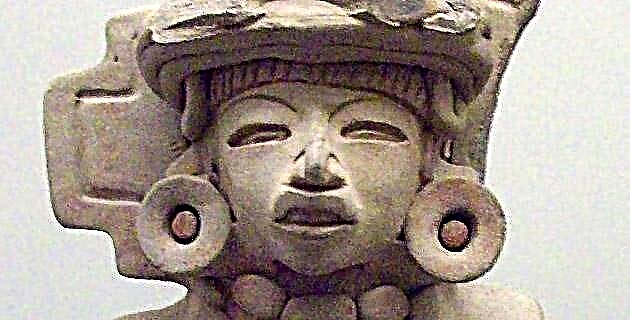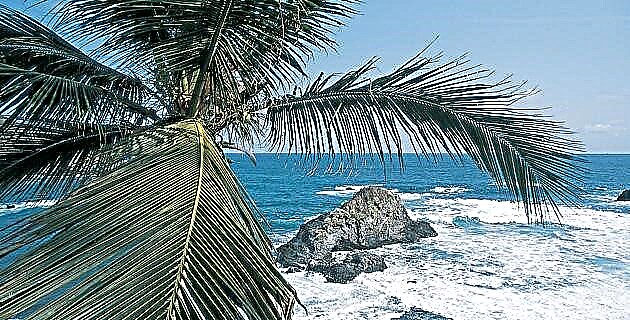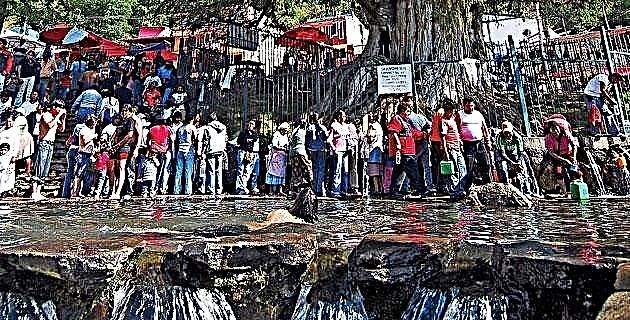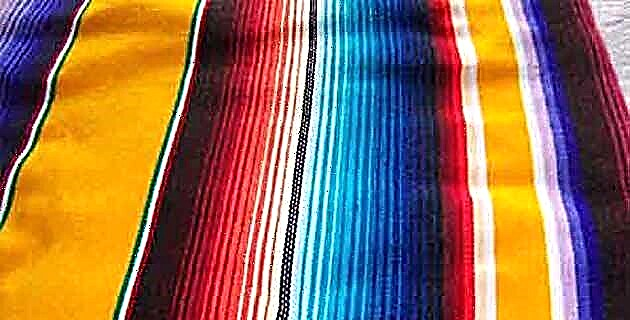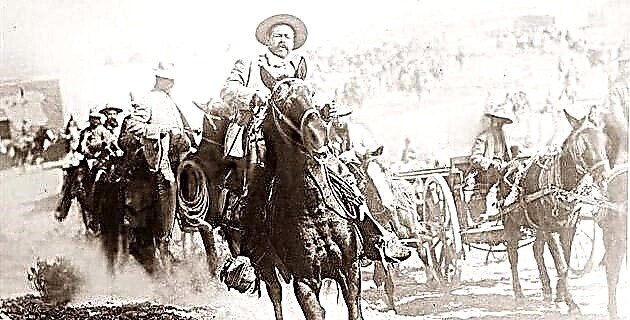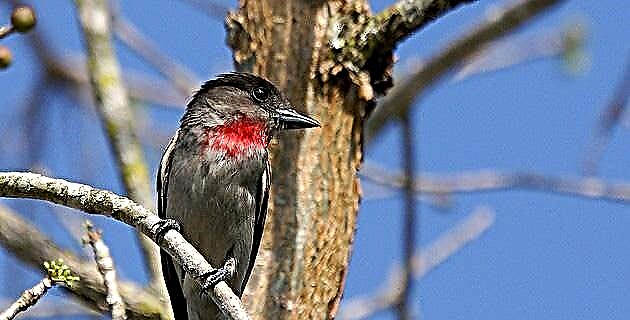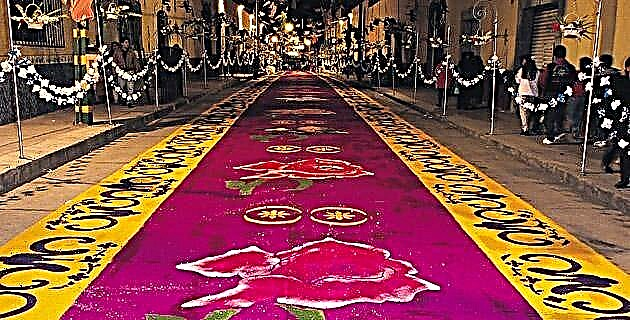
Silence covers the church square and a patient wait is lived around, the burning of the copal perfumes the atmosphere with its strong aroma and beyond that the ringing of the bells reminds us that it is the town's festival to venerate its Virgin of the Charity.
It is August 14 in Huamantla, Tlaxcala, the day when preparations are made to celebrate the Virgen de la Caridad at night. The celebration is famous for the traditional way of conceiving the festival: flower rugs in the streets, pilgrimage with the Virgin at dawn, pre-Hispanic dances, cultural shows, the fair and the “humantlada”. This is the Huamantla festival, colorful and spectacular, where traditional rites are mixed with Spanish Catholic beliefs.
In the atrium of the church there is a lot of movement but with an almost ritual silence. Some bring and carry flowers, seeds, fruits, dyes, sawdust, and other materials to design the rugs.
Mr. José Hernández Castillo, "el Cheche", a chronicler of the city, receives us at his home. The walls of the patio are upholstered with plaster sculptures, they are the hands of different people dating from 1832 to date.
Mr. Hernández tells us part of the history of the town by showing us the copies of ancient codices. There the battles between Aztecs and Otomi appear; between Hernán Cortés and the natives, as well as the different routes to the foundation of Cuauhmantlan, the place of the trees together. In addition to the Otomi, different groups were formed here, including the Nahuatl.
It is said that the form of Christian charity, back in the seventeenth century, the date on which the image of the Virgin of Charity reached the town, spread among the neighbors by uniting acts of worship, such as receiving food and help of different kinds . These works of mercy were known as “we are going to charity”, and that is why the Virgin of the Assumption became Virgin of Charity, which for more than 300 years has been venerated in the city.
The festival is celebrated with the striking floral rugs that are spread in the streets where the Virgin passes. It is a pre-Hispanic tradition that expresses the indigenous taste for flowers, as seen in the codices, where warriors carry flowers instead of weapons.
"El Cheche" takes us to meet his sister Carolina, who has followed the beautiful tradition of making the dresses that the Virgin wears every year.
Miss Caro speaks little and smiles at our questions, explaining her dedication to embroidering dresses: “It is a work that I began in 1963. The Virgin at that time had only the gala dress and the daily dress. I proposed to some colleagues to make her dress in white silk with a gold thread, and thus we continued the tradition for all these years ”.
Every anniversary Miss Caro, along with other women, offer their clothing work, while the dress is donated by one or more people, in some cases it is an offering for a miracle of the Virgin.
“I had a problem with a fracture in my spine,” continues Miss Caro, “the doctors told me that I would never walk again. Some time later they took some plates and told me that the bones were already full of cartilage. Since then I promised the Virgin to embroider her dresses. "
The dresses are embroidered with a gold ring imported from Germany, and each dress carries about half a kilo of gold; The fabrics are made of satin or white silk, the manufacture takes about three months, and 12 people participate in it, working shifts in the mornings and afternoons.
The designs of the dresses are mainly based on the Huamantla codices. We have the example of the 1878 dress, in which magnolias or yoloxóchitl appear, which the Otomi offered to the goddess Xochiquetzal. The 2000 dress is based on the jubilee and on the canvas that Carlos V gave to the Huamantlecos in 1528, on it appears the symbol of Huamantla, with the abundance of trees, flora and fauna, with the Otomi and Nahuatl houses, the snake , the deer, the magueys and the five doves representing the five continents.
In her book Las lunitas, Elena Poniatowska dedicates some fragments to Caro and the other women, alluding to the fact that a prayer escapes from each stitch of embroidery. Caro smiles and tells us that the sessions are very fun because around the frame they talk and tell jokes, giving color to this work based on love and faith.
On August 13, the priest lowers the Virgin from her niche and offers her to the embroiderers so that, apart and in silence, they can clean her and change her dress to make her ready for the party. Oils are avoided to clean it, and following the advice of a sculptor they use green tomato juice. Women carry out this activity having the privilege of spending two hours with her procuring her devotion.
In the past, the Virgin's hair was not very nice, so someone donated the hair and over the years it became a tradition. Hair is usually donated by girls who choose a date to cut it.
In the future, the museum of dresses will be opened, in which iconographic scraps of the mestizo history of Huamantla will be read.
At dawn on August 15, at the end of the mass, the Virgin's exit to the street is spectacular: fireworks light up the sky, the fence of girls dressed in white line up along the tapestries; people are getting closer and closer to the passage of the float where the Virgin is going. The faithful have waited hours to admire it, the emotion is indescribable, the image seems to come to life, beautifully dressed, with open arms. The Virgin walks away and the people follow behind with lighted candles in their hands, walking on the flower carpets.
The night becomes less bright and quieter, highlighting in the distance the glow of lights and a town that makes the tradition of celebrating its own.
MYTHS AND LEGENDS
There are several myths and legends around the miracles of the Virgin. Proof of this are the former votes that attest to the North American invasion, the battle of Porfirio Díaz against Lerdo de Tejada, the invasions during the Revolution, especially that of Colonel Espinoza Calo, who was never able to take Huamantla. It is said that when the colonel's troops entered they were surprised to see on the roofs, on the balconies and on the bars of the houses women dressed in white pointing their rifles at them, the cavalry retreated, attacked from the other side and returned to meet the same women. They say it was just a vision, a miracle of the Virgin who protected her people.
In another invasion, on Holy Thursday, they tried to poison the water by pouring cyanide into the springs, but at that moment huge waves appeared coming from the mountain, dragging trees and animals, forcing the attackers to retreat.
It is said that in the early morning of November 16, 1876, Porfirio Díaz asked the Virgin to help him fight, promising that if he won the battle, he would offer him a palm, a crown and a golden halo. He won the battle, and as president he took his offerings to the Virgin.


